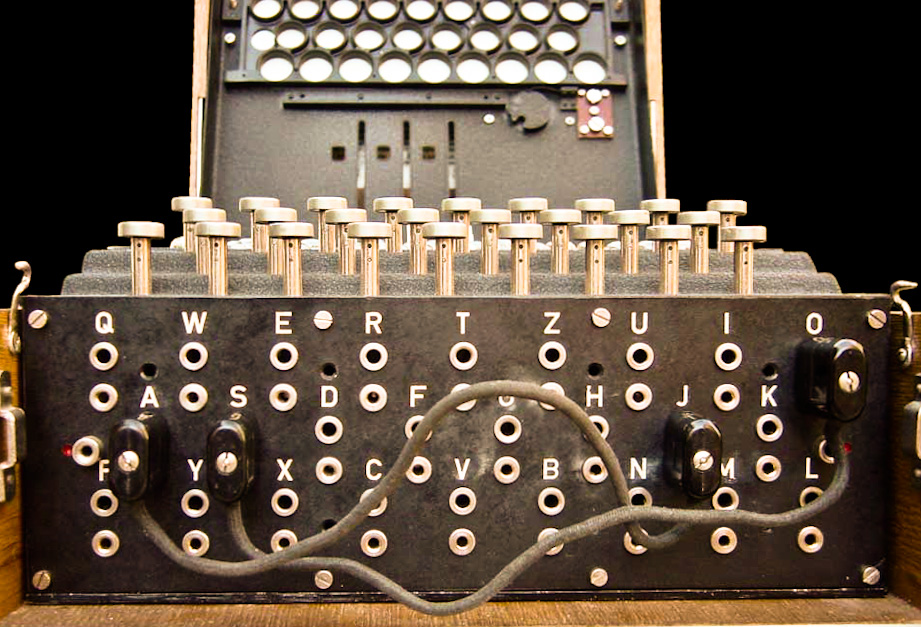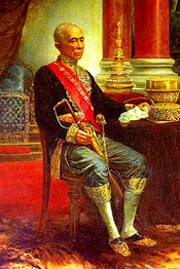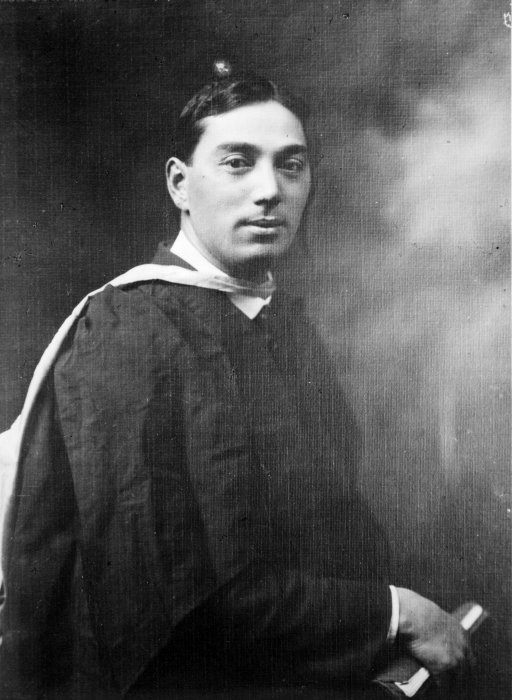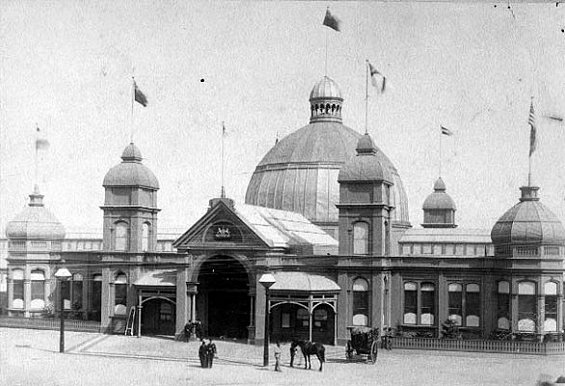|
Hōri Pukehika
Hōri Pukehika (23 March 1851 – 30 May 1932) was a New Zealand Māori people, Māori tribal leader and woodcarver. Youth and Family Pukehika was born in Pipiriki, New Zealand. He was of the Ngatiruaka, Ngati Hinepango, Ngapaerangi, and Ngati Tuera hapū, and the iwi Te Ati Haunui-a-Paparangi. His father was Te Wikirini Te Tua of Te Āti Haunui-a-Pāpārangi iwi, and his mother was Peti Te Oiroa of Ngāti Pāmoana. When he was 17 years of age, he was among those who watched from the bank of the river as the chosen warriors fought in the battle of Moutoa Island in May 1864. He accompanied Te Keepa Te Rangihiwinui (also known as Major Kemp, the first Māori to command British soldiers) in pursuit of Te Kooti's War, Te Kooti. He was honoured with the Māori War Medal for his bravery in 1869 at the Battle of Te Pōrere near Taupō, where Te Keepa attacked Te Kooti's ''pā''. He was a popular orator for young men who looked up to him as the last of the great Māori warriors of t ... [...More Info...] [...Related Items...] OR: [Wikipedia] [Google] [Baidu] |
Pipiriki
Pipiriki is a settlement in New Zealand, on the east bank of the Whanganui River, due west of the town of Raetihi and upriver from Whanganui; it was originally on the opposite bank. It is the location of the Paraweka Marae of the hapū Ngāti Kurawhatia of the iwi [e Āti Haunui-a-Pāpārangi. In the 1840s Pipiriki was a large stockaded settlement, the second largest on the Whanganui River, consisting of eight pā with a total population of 250–300. Wheat was a major crop from 1848 onward, and the water-powered Kaukore flour mill was built in 1854. In 1865 three redoubts across the river were besieged for several weeks by Pai Mārire warriors. Pipiriki was an important part of the riverboat trade in the 1890s–1920s, marking a major stop for paddle steamers making the 11-hour journey from Whanganui. There are four marae in the Pipiriki area affiliated with local iwi and hapū: * Kirikiriroa Marae and Kirikiriroa meeting house are affiliated with the Ngāti Hāua hapū of N ... [...More Info...] [...Related Items...] OR: [Wikipedia] [Google] [Baidu] |
New Zealand Woodcarvers
New or NEW may refer to: Music * New, singer of K-pop group The Boyz * ''New'' (album), by Paul McCartney, 2013 ** "New" (Paul McCartney song), 2013 * ''New'' (EP), by Regurgitator, 1995 * "New" (Daya song), 2017 * "New" (No Doubt song), 1999 * "new", a song by Loona from the 2017 single album '' Yves'' * "The New", a song by Interpol from the 2002 album ''Turn On the Bright Lights'' Transportation * Lakefront Airport, New Orleans, U.S., IATA airport code NEW * Newcraighall railway station, Scotland, station code NEW Other uses * ''New'' (film), a 2004 Tamil movie * New (surname), an English family name * NEW (TV station), in Australia * new and delete (C++), in the computer programming language * Net economic welfare, a proposed macroeconomic indicator * Net explosive weight, also known as net explosive quantity * Network of enlightened Women, an American organization * Newar language, ISO 639-2/3 language code new * Next Entertainment World, a South Korean media company ... [...More Info...] [...Related Items...] OR: [Wikipedia] [Google] [Baidu] |
1932 Deaths
Events January * January 4 – The British authorities in India arrest and intern Mahatma Gandhi and Vallabhbhai Patel. * January 9 – Sakuradamon Incident (1932), Sakuradamon Incident: Korean nationalist Lee Bong-chang fails in his effort to assassinate Emperor Hirohito of Japan. The Kuomintang's official newspaper runs an editorial expressing regret that the attempt failed, which is used by the Japanese as a pretext to attack Shanghai later in the month. * January 22 – The 1932 Salvadoran peasant uprising begins; it is suppressed by the government of Maximiliano Hernández Martínez. * January 24 – Marshal Pietro Badoglio declares the end of Libyan resistance. * January 26 – British submarine aircraft carrier sinks with the loss of all 60 onboard on exercise in Lyme Bay in the English Channel. * January 28 – January 28 incident: Conflict between Japan and China in Shanghai. * January 31 – Japanese warships arrive in Nanking. February * February 2 ** A general ... [...More Info...] [...Related Items...] OR: [Wikipedia] [Google] [Baidu] |
1851 Deaths
Events January–March * January 11 – Hong Xiuquan officially begins the Taiping Rebellion in China, one of the bloodiest revolts that would lead to 20 million deaths. * January 15 – Christian Female College, modern-day Columbia College (Missouri), Columbia College, receives its charter from the Missouri General Assembly. * January 23 – The flip of a coin, subsequently named the Portland Penny, determines whether a new city in the Oregon Territory will be named after Boston, Massachusetts, or Portland, Maine, with Portland, Oregon, Portland winning. * January 28 – Northwestern University is founded in Illinois. * February 1 – ''Brandtaucher'', the oldest surviving submersible craft, sinks during acceptance trials in the German port of Kiel, but the designer, Wilhelm Bauer, and the two crew escape successfully. * February 6 – Black Thursday (1851), Black Thursday occurs in Australia as Bushfires in Australia, bushfires sweep across ... [...More Info...] [...Related Items...] OR: [Wikipedia] [Google] [Baidu] |
Te Rangi Hīroa
Sir Peter Henry Buck ( October 18771 December 1951), also known as Te Rangi Hīroa or Te Rangihīroa, was a New Zealand anthropologist and an expert on Māori culture, Māori and Polynesian cultures who served many roles through his life: as a physician and surgeon; as an official in public health; as a member of parliament; and ultimately as a leading anthropologist and director of the Bishop Museum in Hawaii. In his younger years, Buck was highly accomplished as an athlete. At Te Aute College he captained the high school's Sport of athletics, athletics and Rugby union, rugby teams and while at University of Otago Dunedin School of Medicine, University of Otago's medical school he was national long jump champion in 1900 and 1903. Buck served as a medical officer to Māori people, Māori in the years following his medical training in 1905, before completing a Doctor of Medicine, doctor of medicine with a thesis on contemporary and traditional Māori medicine in 1910. In 1909 he ... [...More Info...] [...Related Items...] OR: [Wikipedia] [Google] [Baidu] |
Flax Kit Makers 1906
Flax, also known as common flax or linseed, is a flowering plant, ''Linum usitatissimum'', in the family Linaceae. It is cultivated as a food and fiber crop in regions of the world with temperate climates. In 2022, France produced 75% of the world's supply of flax. Textiles made from flax are known in English as linen and are traditionally used for bed sheets, underclothes, and table linen. Its oil is known as linseed oil. In addition to referring to the plant, the word "flax" may refer to the unspun fibers of the flax plant. The plant species is known only as a cultivated plant and appears to have been domesticated just once from the wild species '' Linum bienne'', called pale flax. The plants called "flax" in New Zealand are, by contrast, members of the genus ''Phormium''. Description Several other species in the genus ''Linum'' are similar in appearance to ''L. usitatissimum'', cultivated flax, including some that have similar blue flowers, and others with white, y ... [...More Info...] [...Related Items...] OR: [Wikipedia] [Google] [Baidu] |
James Cowan (New Zealand Writer)
James Cowan may refer to: * James Cowan (author) (1942–2018), Australian author * James Cowan (bishop) (born 1952), Anglican Bishop of Columbia from 2004 to 2013 * James Cowan (British Army officer), Major General in the British Army * James Cowan (footballer) (1868–1918), Aston Villa footballer of the 19th century * James Cowan (Manitoba physician) (1831–1910), Manitoba physician and politician from the 19th century * James Cowan (Manitoba politician) (1914–1997), Manitoba politician from the 20th century * James Cowan (New Zealand writer) (1870–1943), New Zealand writer of the 20th century * James Cowan (Ontario politician) (1803–1900), politician in Canada West * Jimmy Cowan (rugby league) (born 1975), rugby league footballer for Scotland, and Oldham Roughyeds * James Cowan (Scottish politician) (1816–1895), Liberal Member of Parliament for Edinburgh 1874–1882 * James Cowan (South Australian politician) (1848–1890), South Australian politician *James Cowan, fl ... [...More Info...] [...Related Items...] OR: [Wikipedia] [Google] [Baidu] |
Entry To Maori Pa 1906 Christchurch Exposition
Entry may refer to: *Entry, West Virginia, an unincorporated community in the United States *Entry (cards), a term used in trick-taking card-games *Entry (economics), a term in connection with markets * ''Entry'' (film), a 2013 Indian Malayalam film *Entry, occurrence of a repeated musical theme, especially in a fugue * Atmospheric entry *Royal entry, a procession of a ruler or his/her representative into a city in premodern Europe See also * Enter (other) Enter or ENTER may refer to: * Enter key, on computer keyboards * Enter, Netherlands, a village * ''Enter'' (magazine), an American technology magazine for children 1983–1985 * ''Enter'' (Finnish magazine), a Finnish computer magazine * Enter ... * Entrance (other) * * {{disambiguation ... [...More Info...] [...Related Items...] OR: [Wikipedia] [Google] [Baidu] |
International Exhibition (1906)
The New Zealand International Exhibition (the biggest in the country to that time) opened on 1 November 1906 in Hagley Park, Christchurch, New Zealand. Nearly two million people visited the exhibition during the next few months. The idea for the International Exhibition came from the prime minister, Richard Seddon, who was working on the government's 1903 budget and noticed a line item for the country to be represented at the St. Louis World's Fair in 1904. In Parliament, Seddon announced his idea as an intercolonial fair for New Zealand "on a scale unprecedented south of the Line". The initiative approved by cabinet contained just three facts: it was to be larger than any prior event, to be held in Christchurch's Hagley Park, and be held soon. The government financed the exhibition and would cover any losses. When public servants queried about the scale of the proposed event, Seddon clarified his expectations: I thought I made it clear when I said it was to surpass anything hi ... [...More Info...] [...Related Items...] OR: [Wikipedia] [Google] [Baidu] |
New Zealand And South Seas Exhibition (1889)
The New Zealand and South Seas Exhibition was an international exhibition held in Dunedin, New Zealand from 26 November 1889 to 19 April 1890. A previous exhibition had been held in New Zealand Exhibition, 1865, the first world's fair in New Zealand, and a later exhibition opened in New Zealand and South Seas International Exhibition, 1925. Organization D. H. Hasting proposed the hosting of an international exhibition in Dunedin, New Zealand, to celebrate the golden jubilee in 1890 of the proclamation of British sovereignty over New Zealand in 1840. A meeting was held on 25 October 1888 to form an organizing committee. John Roberts was elected president and Richard Twopeny, executive commissioner. Alfred Lee Smith was one of the directors of the exhibition. The national government officially recognized the New Zealand and South Seas Exhibition, and granted £10,000 for its organization. Architecture A site of about 121 acres was donated by the Otago Harbour Board, bounded b ... [...More Info...] [...Related Items...] OR: [Wikipedia] [Google] [Baidu] |
Melbourne International Exhibition (1880)
The Melbourne International Exhibition is the eighth World's fair officially recognised by the Bureau International des Expositions (BIE) and the first official World's Fair in the Southern Hemisphere. Preparations After being granted self-governance, Victoria (in 1851) and New South Wales (in 1856), saw a steady economic growth as a result of the discovery and exploitation of gold reserves. This growth during the 1850s and 1860s led to rivalry between their respective capitals Melbourne and Sydney. In the 1870's the focus turned to the outside world and proposals were made for organising an exhibition modelled on the great exhibitions of Europe, with an aim to promote commerce and industry, along with art, science and education. Melbourne started preparations in 1879 and filed a plan to the Parliament. Melbourne's rival Sydney, the older of the two cities, wanted to be the first and organised an exhibition in record time. This Sydney International Exhibition (1879), Sydney ... [...More Info...] [...Related Items...] OR: [Wikipedia] [Google] [Baidu] |






